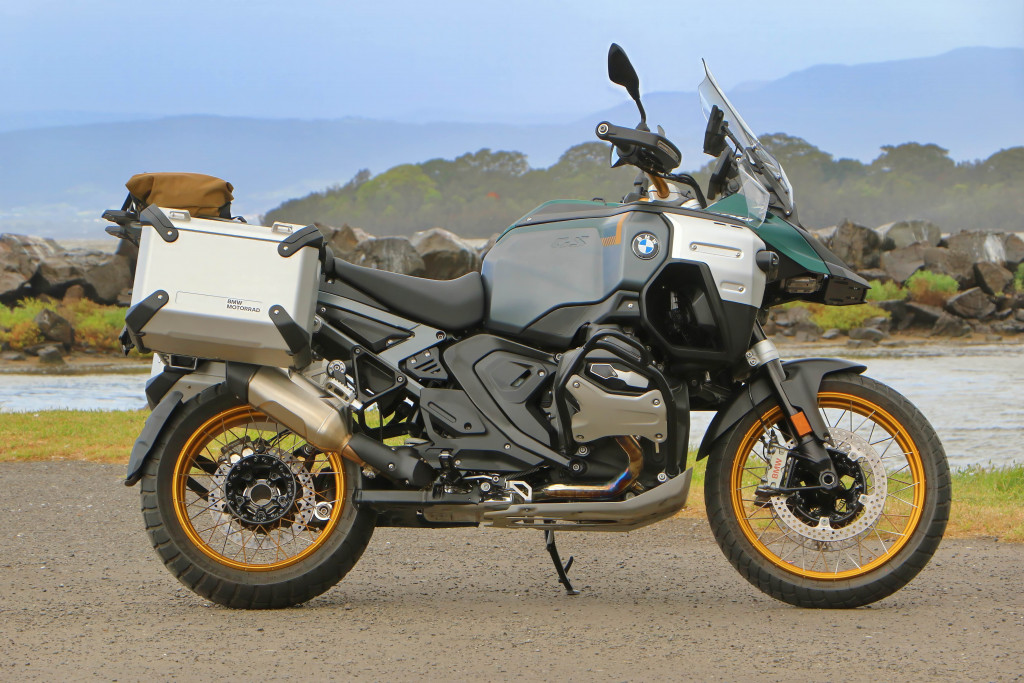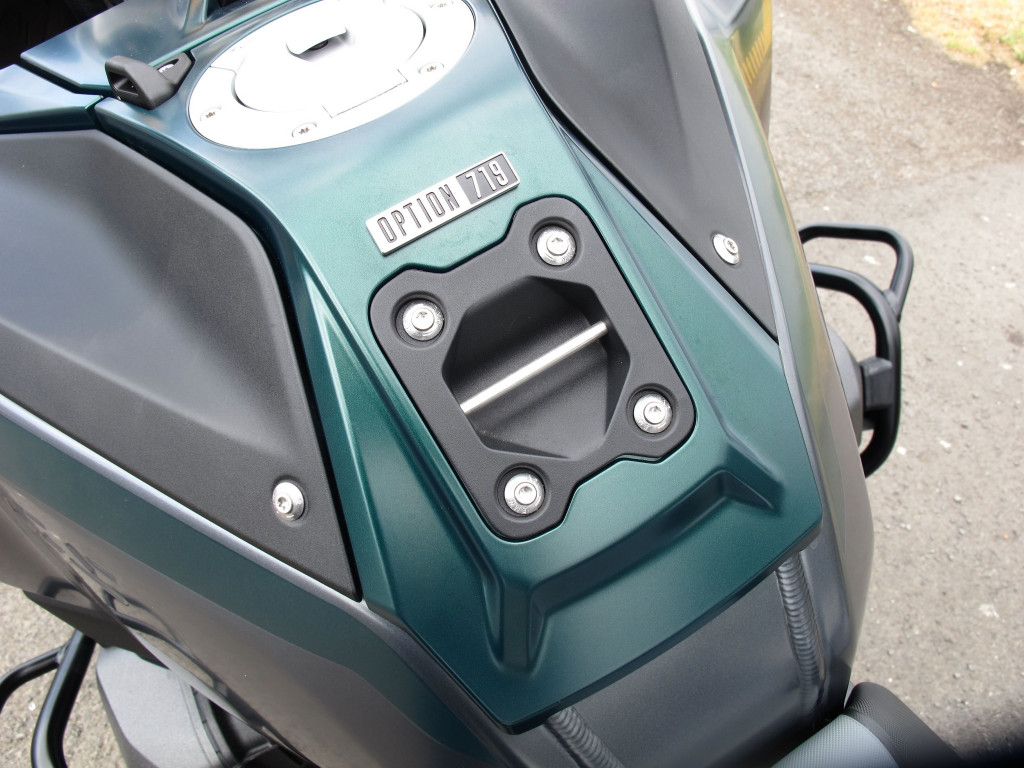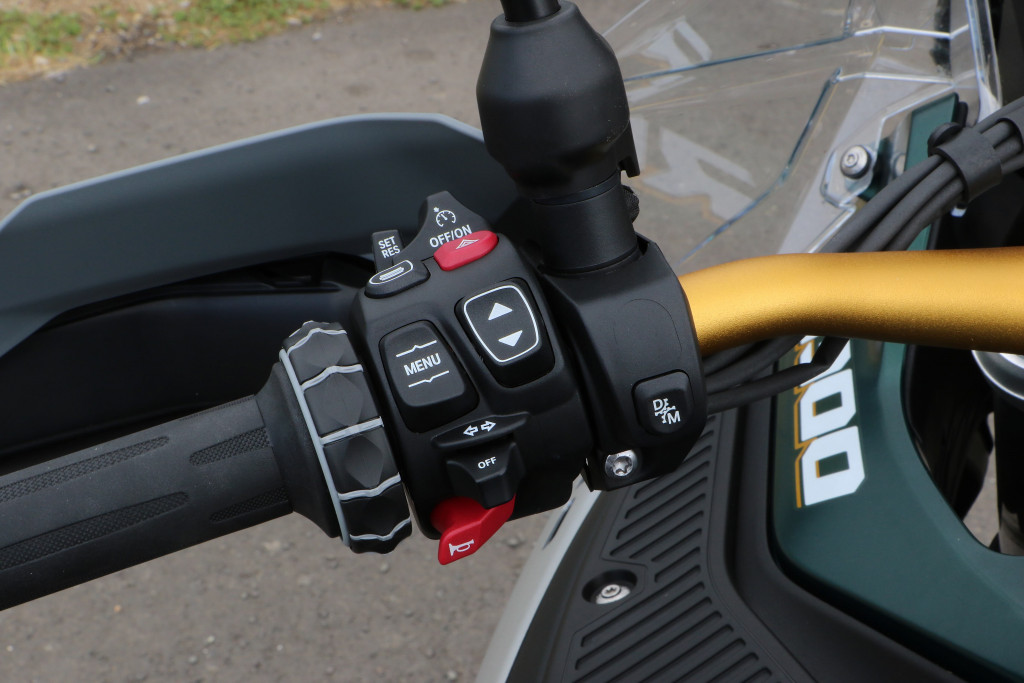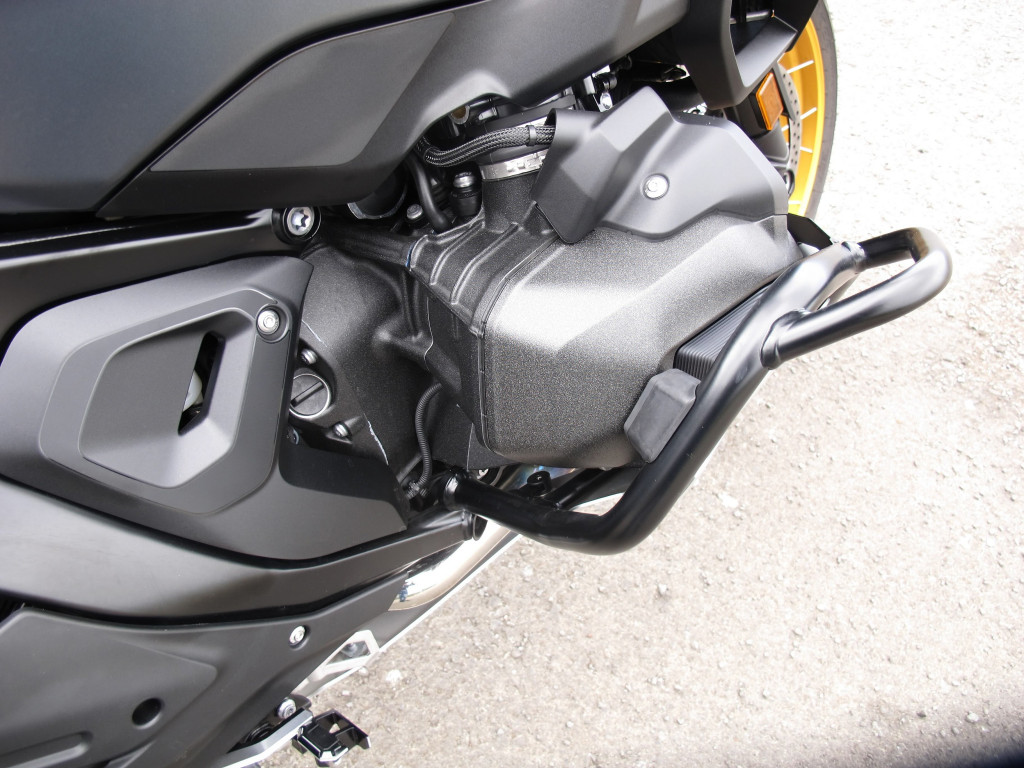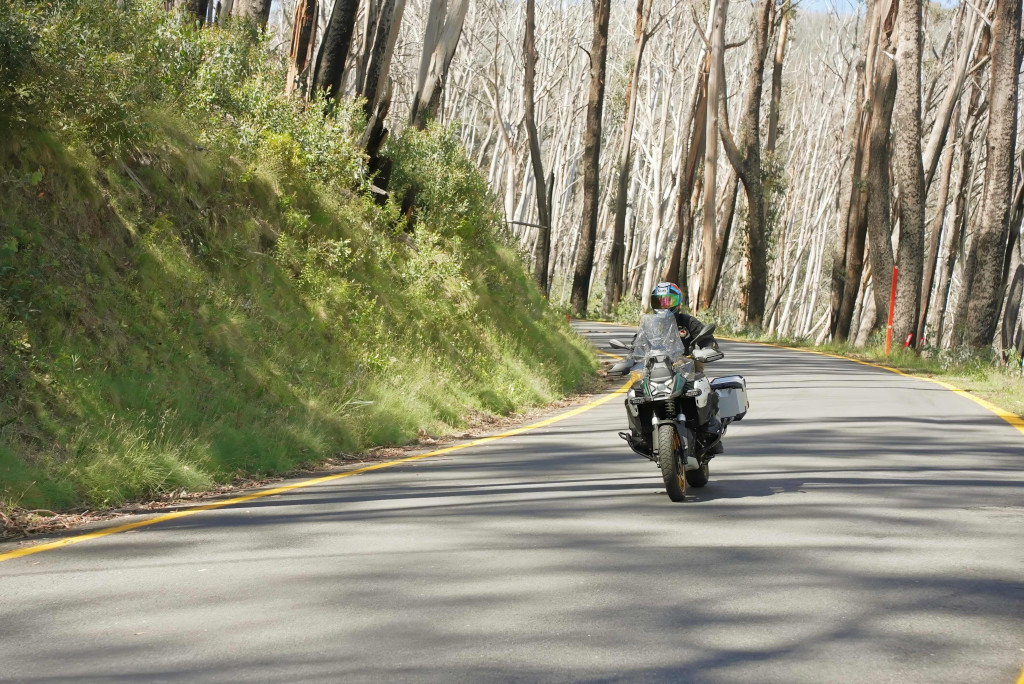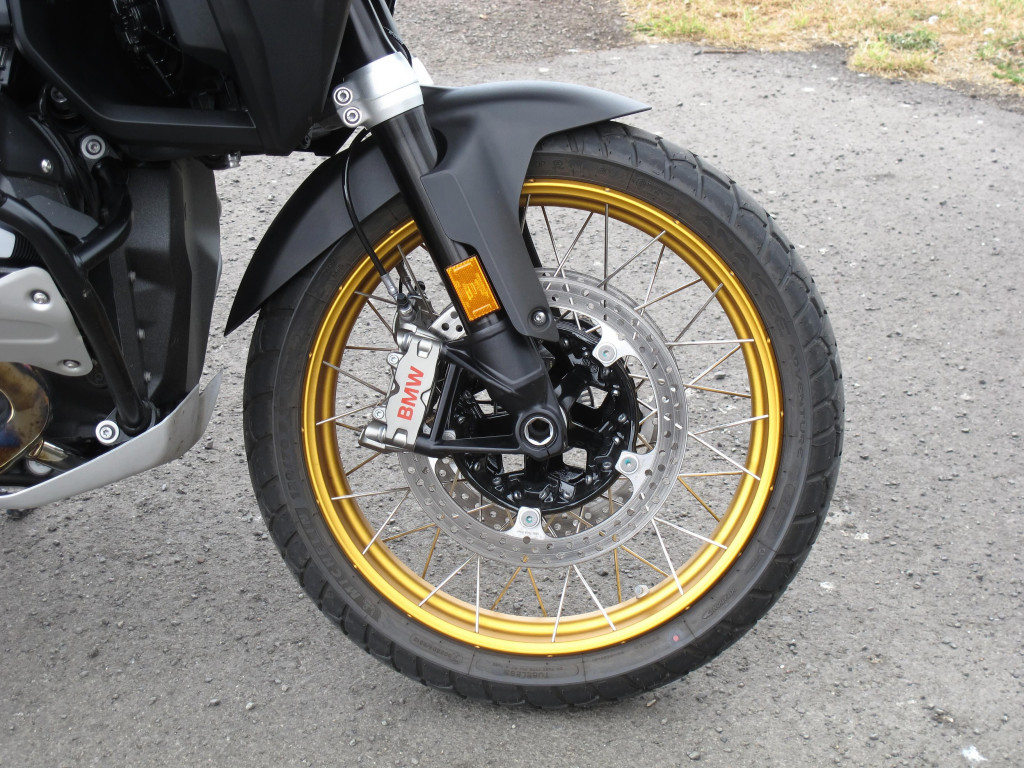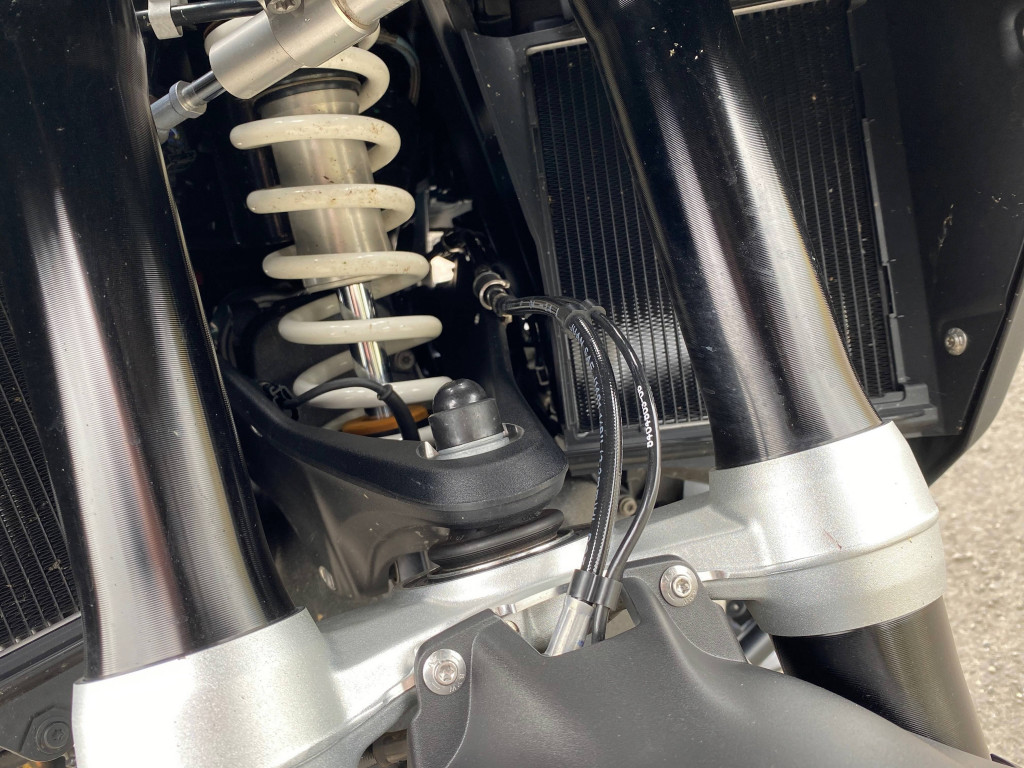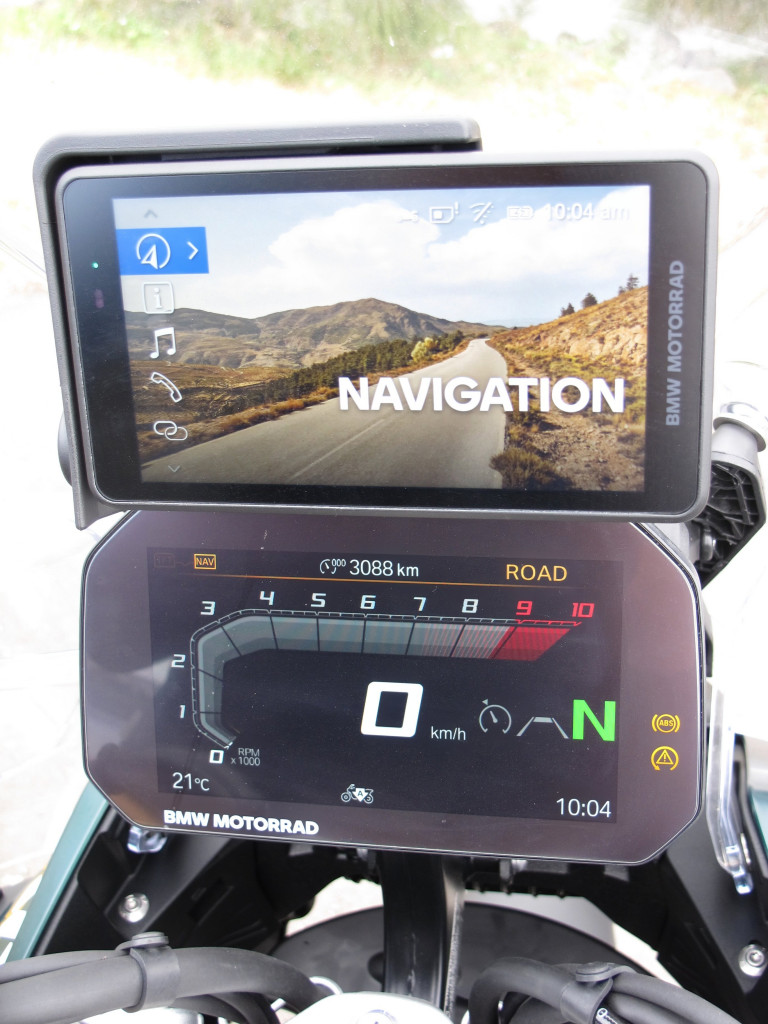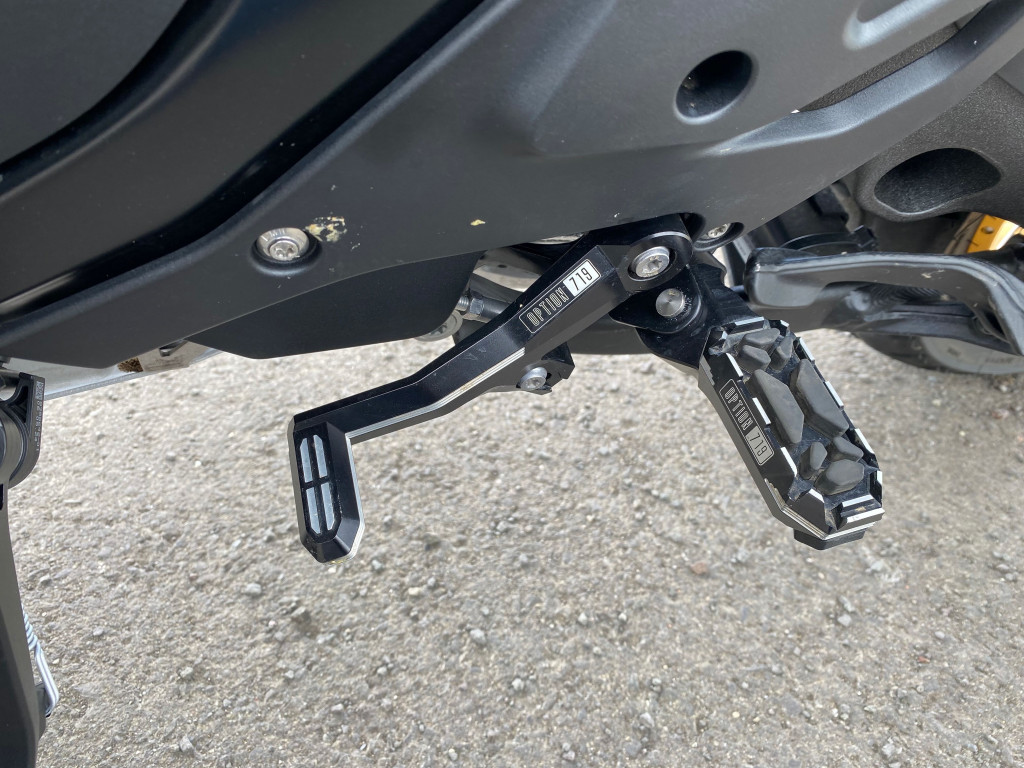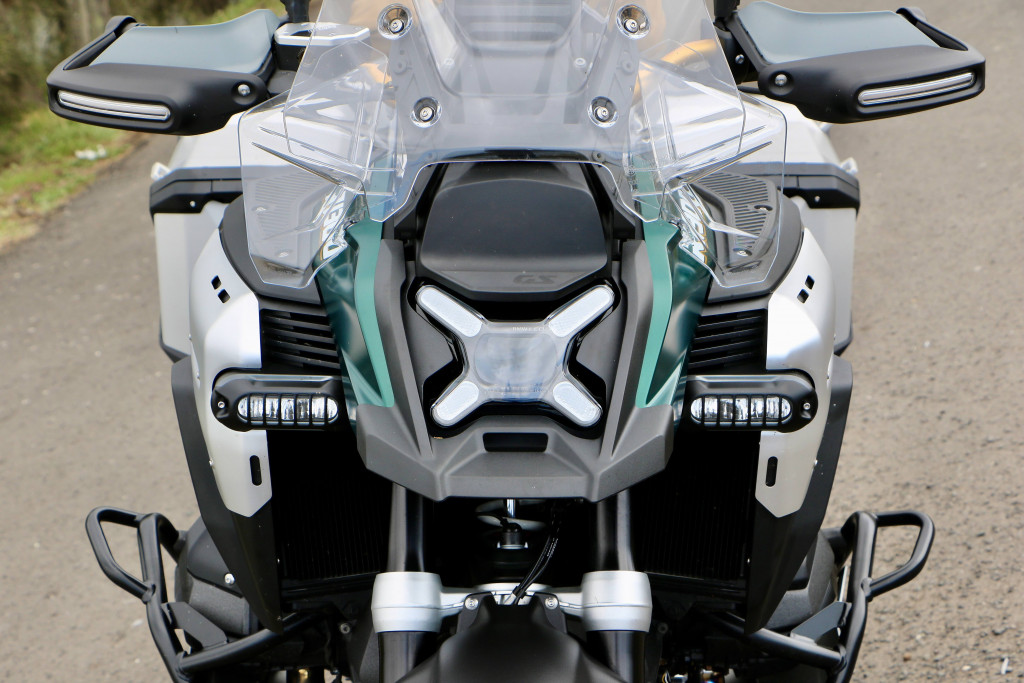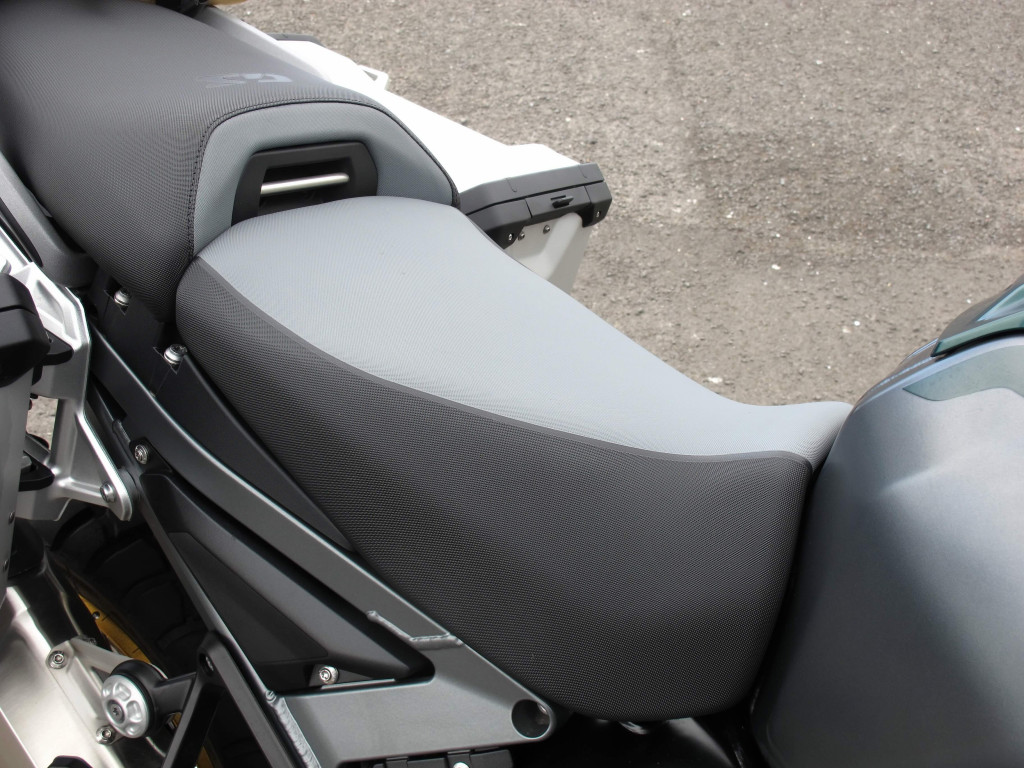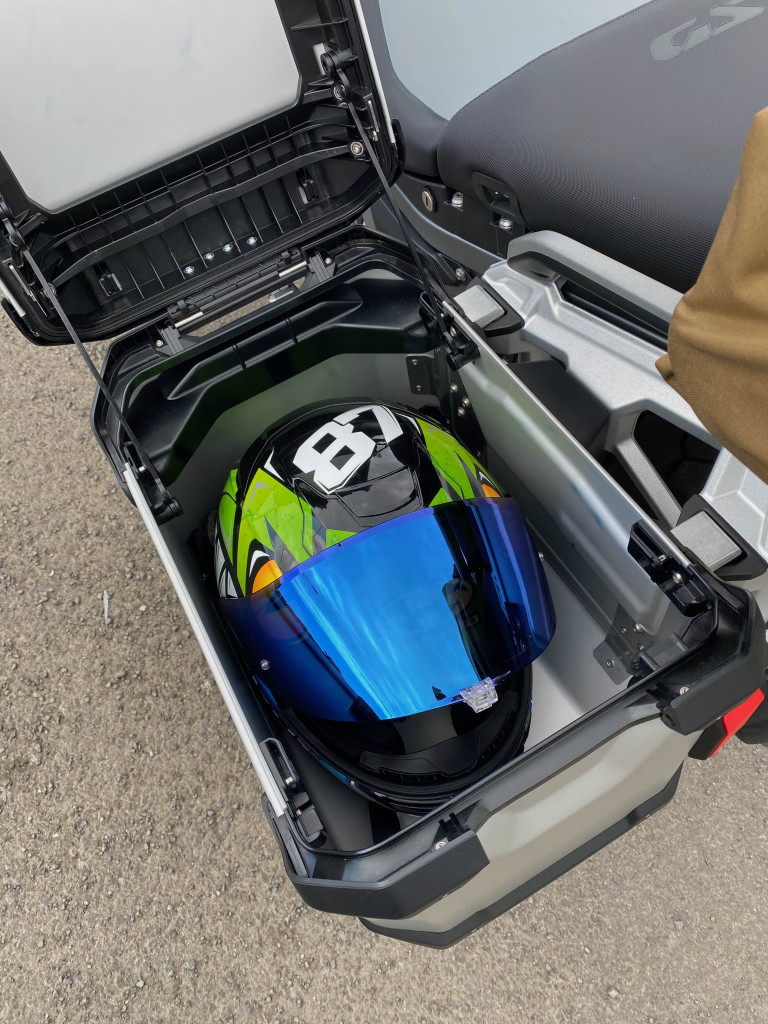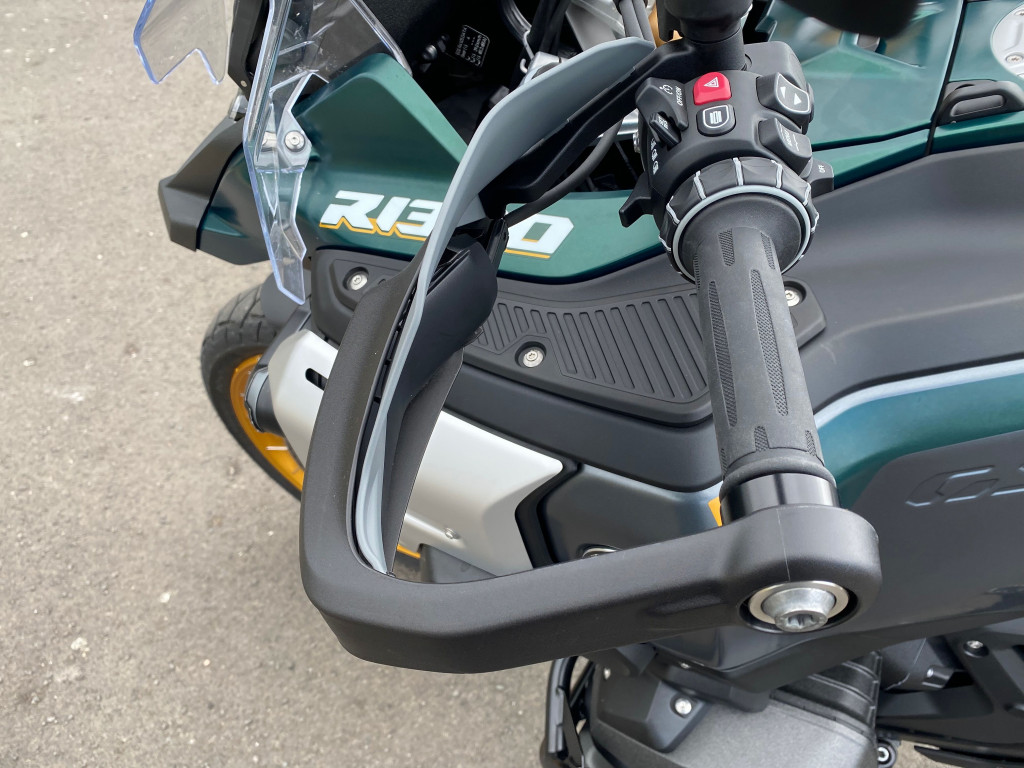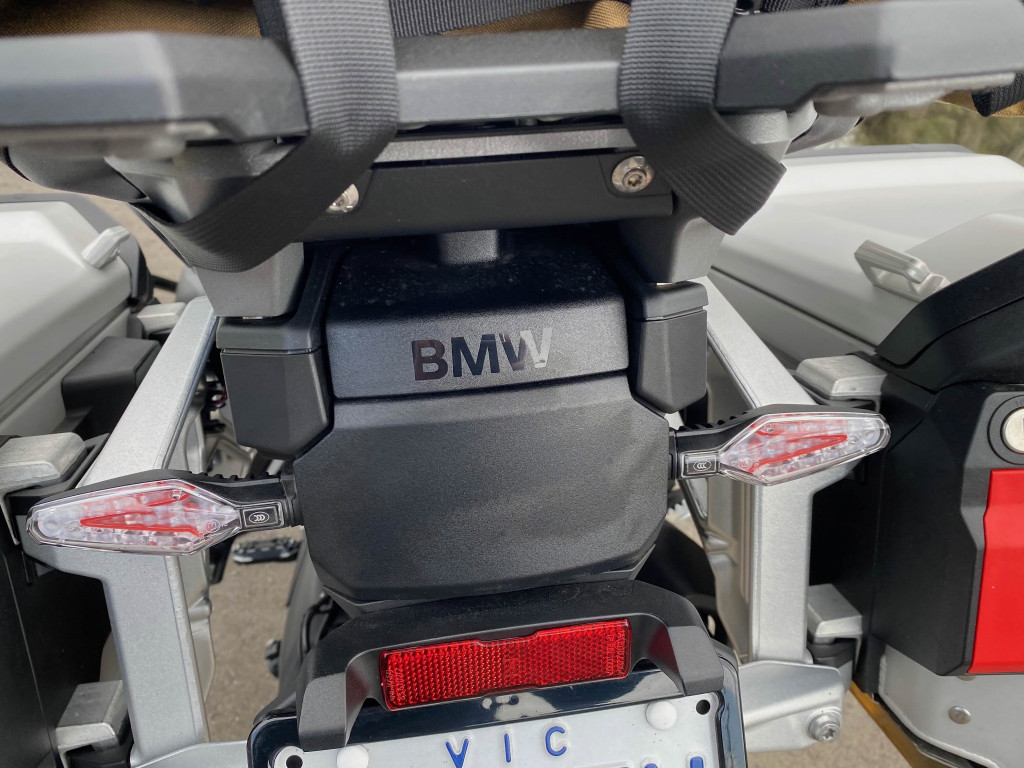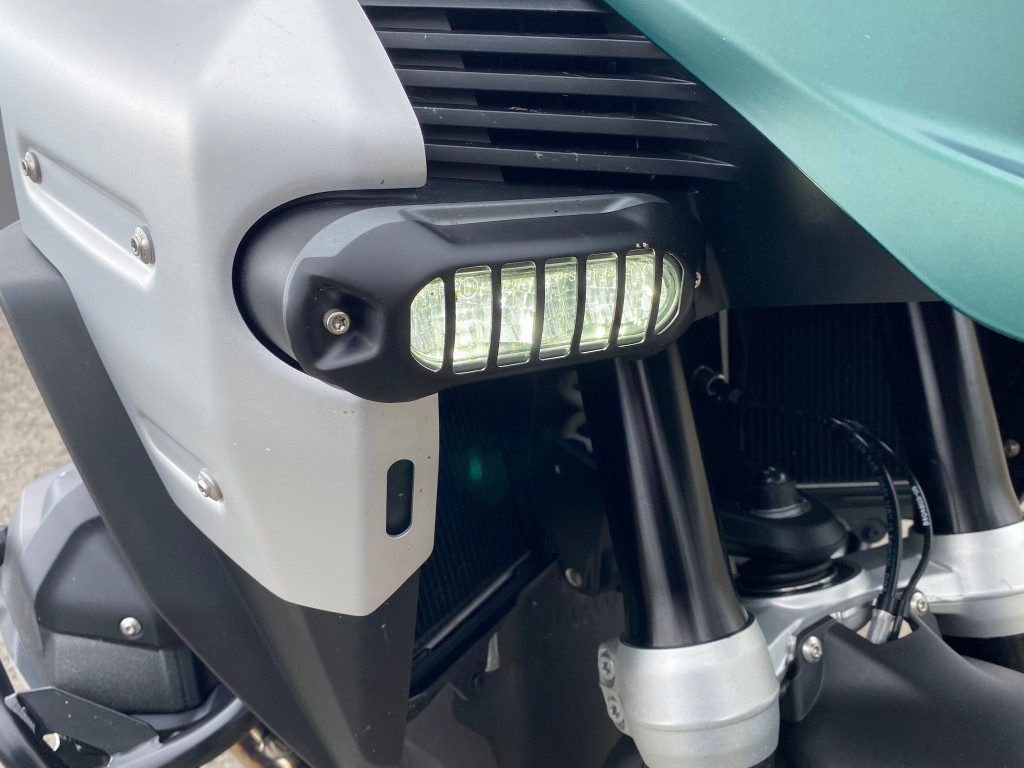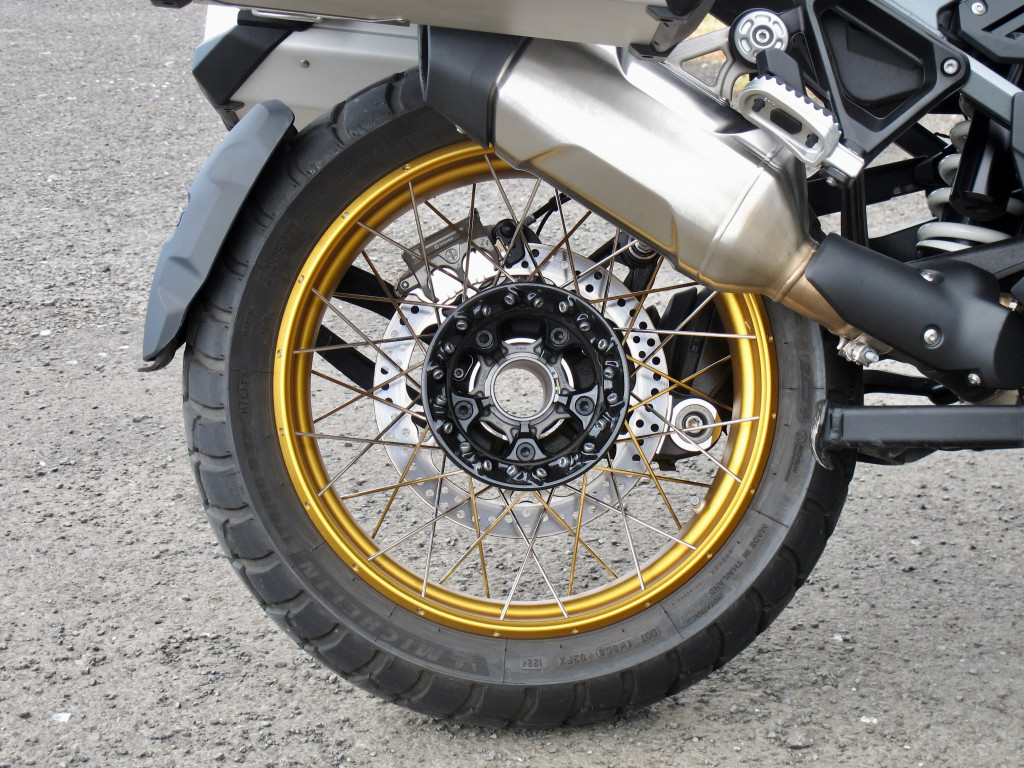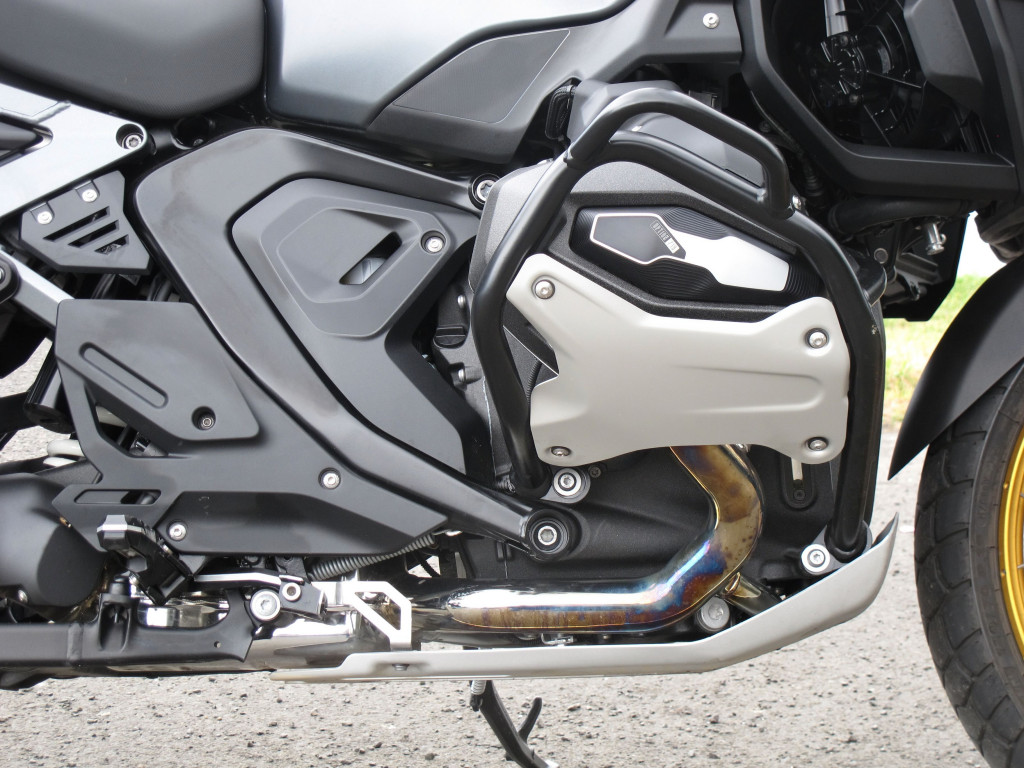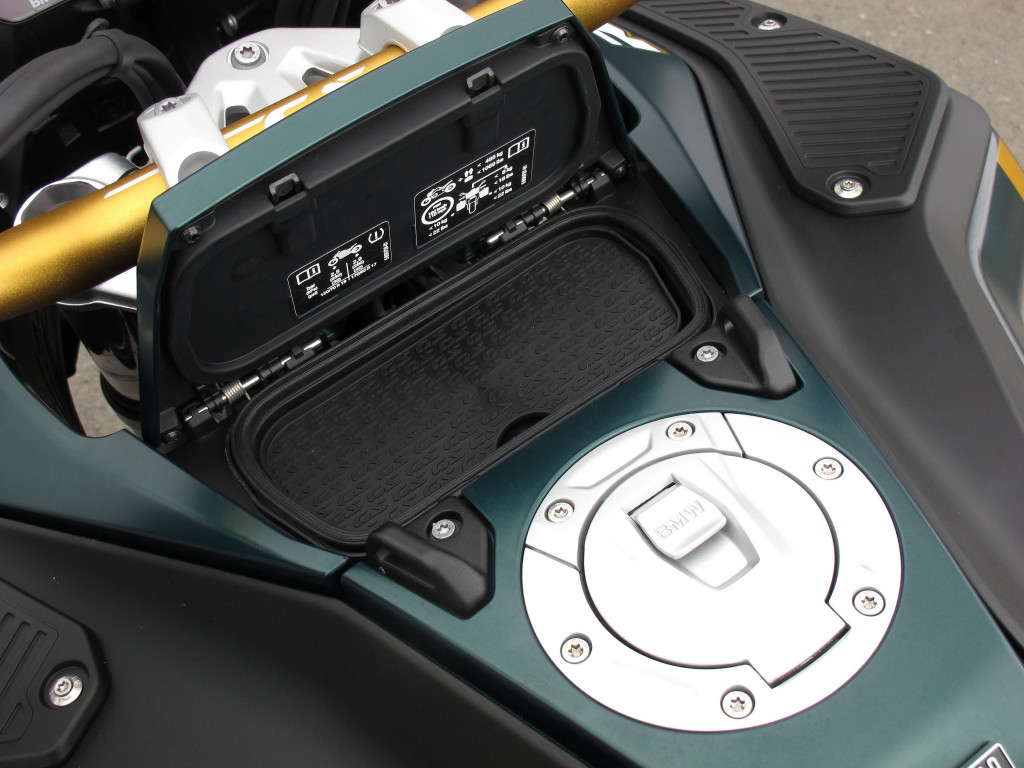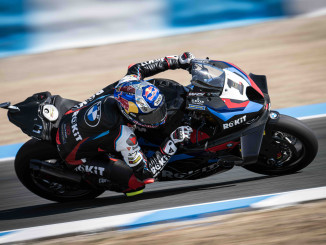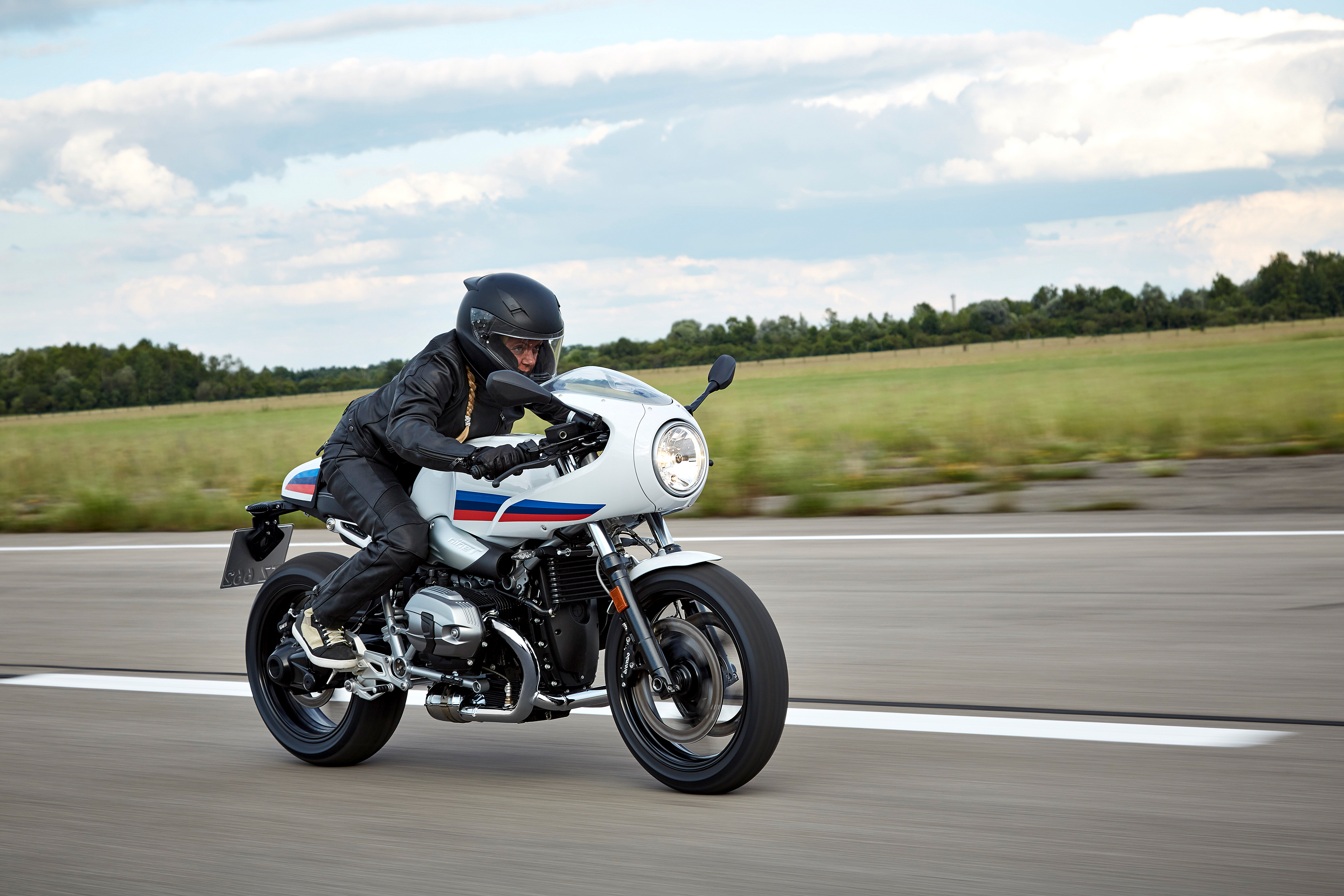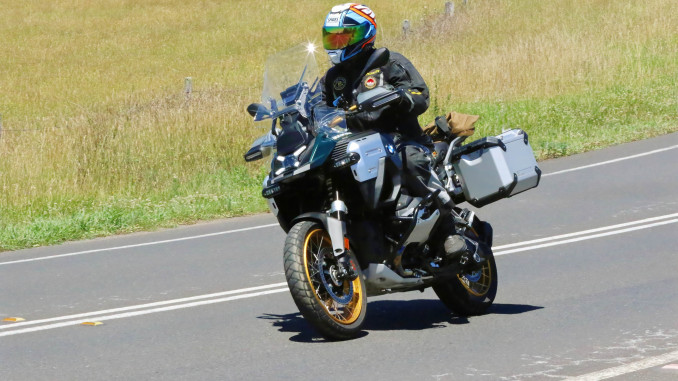
The BMW R 1300 GS ASA Option 719 is a big, burly benchmark setter that can be configured to do almost anything an owner asks of it.
TEST: SEAN MOONEY
PHOTOS: ERIN MOONEY & DEAN MELLOR
The text message from the ARR editor was one I’d usually reply to quickly with a thumbs-up emoji. “Are you available to test the new BMW R 1300 GS Adventure?” It hurt to tell Deano that, no, I would be riding through the Snowy Mountains and beyond with my daughter on my Ducati during the test period.
It took me a few minutes to realise that I should just take the GSA on the trip and give it a proper test on what was shaping up to be a 3000km ride. Deano was on the same wavelength. “Do it on the BMW,” he wrote. Couldn’t really argue with that. My Multistrada V4S is a brilliant touring machine, but of course the big Beemer is absolutely in the same league and a proper road trip with full luggage and a pillion would be a great way to test it.
That’s how I find myself piloting almost half a tonne of rolling Bavarian thunder through tight, inner-city streets. That’s bike, fuel, packed panniers, soft luggage, rider and passenger. And I can really feel every kilo as I navigate the morning peak-hour traffic. It’s reassuring to know that the engine guards wrapped around the cylinder heads are as wide as the panniers at the back, but there’s definitely no lane splitting happening today. I’m grateful once we hit the highway, which of course is where the GSA comes into its own. But before we get to that, let’s take a step back and look at exactly what it is I am riding.
Option 719
What we have here is the most expensive model variant of the biggest, heaviest GS Adventure bike fitted with the most powerful serial production BMW boxer engine manufactured to date. It’s the R 1300 GS Adventure Option 719, which means that, on top of the long list of features on the base model, it also comes with a taller (electronically adjustable) windshield, topbox carrier and M lightweight battery, as well as Headlight Pro and Riding Assistant functions. The Option 719 also comes with the Touring package (chrome-plated header pipe, fastening for aluminium panniers, cradle for a GPS device and a centre stand) and Dynamic package (Riding Modes Pro, Gear Shift Assistant Pro and Sport Brake functions). Don’t worry, we’ll look at what this all means in more detail shortly; suffice to say, it’s got all the fruit, plus some.
The Option 719 model delineation also means that, as well particularly high-quality paintwork (in this case an Aurelius Green Metallic Matte colour scheme), there’s a billet pack of quality milled parts found across the machine, gold cross spoke wheels, and larger, thicker (and heated) rider and passenger seats. The testbike is also fitted with optional Adaptive Vehicle Height Control, Automated Shift Assistant, TFT protector, ConnectedRide Navigator GPS unit and aluminium side panniers, which takes the ride away price tag to almost $50k.
All this comes together to create a very large, very capable extension of the new R 1300 GS platform, but with a 30-litre fuel tank, longer suspension travel and new tubular aluminium rear frame for more room and payload, among other differentiating features. With its big, boxy aluminium tank and distinctive new ‘crosshairs’ headlight with daytime running lights, the Adventure’s styling is not to everyone’s taste. However, I quite like its purposeful stance and rugged looks; there’s absolutely no denying that it has ‘presence’.
Self shifting
Okay, so back to the riding, which initially comprises a full day of motorway miles. Yes, a little bit boring but it gives me the opportunity to play with all the functions of the bike and get the set up right. The first thing I have to decide is whether to run the bike in manual or automatic mode. The Automated Shift Assistant (ASA) option on the testbike means there is no clutch lever to be found. So, even in M (manual) all you need is a left foot. In D (drive), everything is left to the actuators that automate the coupling and shifting of the six-speed transmission (although shifting by foot will always override the system).
I run the bike in D for most of the day to familiarise myself with the system. I find that it is really helpful in city traffic and through urban streets, removing any possible stalls from the equation and allowing me to concentrate on safely navigating the maze. It likes to pick as high as gear as possible when in Eco or Road modes, changing up much earlier than I would choose to myself. This is presumably for maximum fuel efficiency, but it works because the torque of the big boxer allows it to pick up quickly when required, even in high gear in low revs, albeit sometimes with a bit of engine rattle. The Dynamic mode set-up feels a bit more like how I might ride myself, but changes are not always as smooth and predictable as I’d like them to be.
While the auto option is definitely great for cruising on the freeway, I never really warm to the system when it comes to any kind of spirited riding, no matter what shift character option I choose. I still want to control the shifting and engine braking myself when things get twisty, but it’s simple to swap between D and M on the fly (no nasty sub menus to navigate here, just a dedicated switch on the left hand side switchgear). The Automated Shift Assistant set up allows you to have the best of both worlds, depending on conditions and your mood, so I’d probably choose this option if I was a buyer.
The caveat here is that, with no clutch lever, hard-core off-road work would have to be done without the benefit of clutch control; if big hours of sand and mud were on the cards, you might just opt to retain the Shift Assist Pro quickshifter, and therefore the clutch lever. Another issue to keep in mind is that starting and moving off on a bike with no clutch lever fitted can be a bit strange. You turn the bike on with the keyless ignition, activate the front brake, long press the starter button and then engage first gear. You go into M mode by default, but you can then easily change to D, if desired. If you want to push the bike around while it is not started, you need to hold the front brake and thumb the starter button quickly to find neutral, as this can’t be done by feel with the gear lever. It might take new owners some time to get past the ‘stuffing around in carparks’ stage. I might be speaking from experience here.
Big boxer
The transmission itself is now found underneath the engine, not behind it as in previous GS models. This has the positive effect of raising the two big cylinders on the 1300cc power plant for increased ground clearance. The big twin produces claimed maximum power of 107kW at 7750rpm and torque of 149Nm at 6500rpm. (The 1250 it supersedes has figures of 100kW at 7750rpm and torque of 143Nm at 6250rpm.) This is achieved through the extra displacement, of course, combined with an increase in the compression ratio, a new arrangement of the camshaft drive, and larger intake and exhaust valves.
A big boxer is undoubtedly as tractable an engine as you could want. Not as thrilling as a V4 or as soulful as a V-twin, perhaps, but BMW has persisted with this engine layout for good reason – it’s reliable, efficient, user friendly and versatile. It can do it all, from slow speed dirt work to high-speed autobahns. It performs faultlessly during our day on the motorway, especially when governed by the superb Dynamic Cruise Control (DCC), which has braking function as standard. I love the cruise control actuation switches on BMWs, and I have to say that I rate the German manufacturer’s switchgear as the best of them all. It’s all very intuitive with a quality feel, and the BMW multi-controller ‘wheel’ provides easy access all the menus on the 6.5-inch TFT display. Once you get your head around how it all works, you’re never quite satisfied with lesser systems again.
Interconnection
Over several days of backroad blasting and alpine cornering, I drive my passenger crazy by messing around with the complex and interconnected menus that make up what BMW calls the riding modes matrix. Along with four standard pre-set and self-explanatory riding modes (Rain, Road, Eco and Enduro), there are also Dynamic and Enduro modes, with customisable options. You can change the settings of the traction control, front wheel lift suppression, rear wheel lift detection, ABS, throttle response and engine braking torque, among other features. I find that the latter two are the most appropriate for fiddling with during two-up riding, and after a while I get them to where I feel most comfortable.
I also spend a bit of time switching between riding modes to see how this alters the Dynamic Suspension Adjustment (DSA) system, which constantly matches the adjustment of the front and rear damping with that of the spring rate, depending on the selected mode and conditions. I loved the system on the old GSA and I love this one even more. It’s so intuitive and instantaneous, dealing with a fully loaded bike tackling mountain hairpins, dirt tracks and high-speed motorways with aplomb. It just soaks it all up, quickly adjusting to the changing conditions, never feeling harsh or beyond its limits.
BMW claims that the combination of the bike’s front-wheel-oriented wheel load distribution with the newly designed EVO Telelever system creates more feel for the front wheel. By decoupling the handlebar from the fork, thereby eliminating rotation of the handlebars under braking or on bumpy surfaces, the system aims to increase steering precision. This is particularly important on motorcycles with wide handlebars and long suspension travel, which is most certainly the GSA. Indeed, the cornering performance of this massive machine on all kinds of surfaces is really impressive. We have a ball roaring though the mountains, despite carrying so much weight; all I’d say is that it’s best to tackle those hairpins (and any other slow-speed technical riding) with a less than full tank of fuel. When you do fill up, you most certainly feel those 30 litres sloshing around in the tight stuff.
All that aforementioned weight requires some serious stopping power, as well as some clever electronic back-up systems to deal with emergency situations. Twin 310mm discs up front with radially mounted four-piston calipers combine with a 285mm disc with two-piston caliper at the rear to bring the big Beemer and those who sail upon her to a halt. Dynamic Brake Control, ABS Pro and Dynamic Engine Brake Control also assist with the stopping duties, and all heavy braking required during our tour is performed with ease with these systems working beneath us. The whole package just feels comfortable, balanced and agile on the move, even on wet or uneven surfaces.
Cruising comfort
Speaking of comfort, it must be said that the new GSA might just be the most comfortable touring bike on the planet. Plenty of room, accommodating seats and excellent wind protection are key to this. The tall, adjustable windshield deflects air over me and my daughter, and we’re both pretty tall. With that big tank, windscreen side deflectors and hand guards, sometimes a bit of extra airflow is needed when it gets warm. If we need some cooling air on us, I just push a button and lower the windshield. Once the temperatures go down, though, all that wind protection combined with heated grips and seats for both rider and passenger make the GSA a pleasant place to be.
I do acknowledge that riding a bike of this size is a damned sight easier when you are at the taller end of the spectrum; being able to get both feet down flat on the ground is really a must. But shorter riders will be happy to hear that you can choose a function that automatically lowers the bike height by 30mm when stationary and at low speeds. Furthermore, the optional adaptive vehicle height control comfort system reduces the standard height of the bike by 20mm, and there’s a choice of low or high seat height that you change by manually switching over the seat’s front fastener. I’m told these make all the difference, but of course the best way to see if it’s for you would be a test ride on a bike fitted with all these features.
The R 1300 GS Adventure is certainly top of the pile when it comes to long-distance tourers that can go anywhere. Is it perfect? Of course not. But any complaints I have are small and easily fixed. For example, the excellent aluminium panniers are tough and have useful tie-down hooks, but I would have liked handles on them to help with carrying. I’m also not a fan of the integrated rear lights/indicators, which are also found on some of BMW’s sportier models. They work in a styling sense, looking sleek and compact, glowing red as taillights, shining brighter under braking, and with orange indicators in the middle. However, when the indicators come on, they are not as easy to see as separate units, and I’m never sure that vehicles behind me are aware that, not only am I braking, but I plan to turn up ahead. There is a reason that there are a host of visibility kits being sold for these bikes that add an extra taillight.
But as we roll back into town, having done about 2500km with pillion and 500km without, it’s hard to fault the steed that brought us safely home without any dramas. And did so with a pretty good average fuel figure of 5.2L/100km overall, which gives the bike a range of close to 600km. If long adventures are in your near future, and you want to tackle them with almost everything that motorcycle engineers can come up with, the BMW R 1300 GS Adventure is certainly an option worth exploring. Few bikes can do it all so well.
View from the back seat
As a passenger, sitting on the BMW R 1300 GS Adventure is nothing short of luxurious. With a wide, heated pillion seat and ample leg room (even for two tall people), this bike is perfect for long-haul touring. The only thing missing on our trip was a topbox, which was not available at the time, but which would have offered me a nice back rest. Without this, I certainly felt more vulnerable, especially considering the sheer horsepower of this big bike – but I made use of the grab handles (or grabbed onto dad) to keep me in place.
Those aluminium panniers provide plenty of luggage capacity, although they do come at the cost of a smooth pillion mounting and dismounting experience. Swinging your legs over these big boxy units can be a bit tricky. And once on, I did find that they forced my feet further forward on the ’pegs than I’d have liked, coming closer to the rider’s boots than I’m used to. I’d have to say that mounting and dismounting dad’s Multistrada V4S is easier, perhaps because of the more rounded plastic panniers, but once you’re on, both bikes are very comfortable.
The R 1300 GS Adventure is certainly a beast that takes a bit of getting used to, for both rider and passenger, but it dealt impressively with everything we threw at it on our long trip. There is no doubt that it is a top long-distance two-up tourer. – Erin Mooney
Assessing the Assistants
Let’s start with Gear Shift Assistant Pro, which is basically a quickshifter function that allows for smooth upshifting and downshifting without operating the clutch lever (when fitted). Due to the use of a contactless sensor, the shift shaft is actuated without idle travel, which increases shifting precision.
The Automated Shift Assistant with automated clutch operation goes a step further by removing the need for a clutch lever all together. As an alternative to gear selection using a foot shift lever, the rider can select the automatic gear shift function that provides shifting characteristics that correlate to the riding mode.
The Riding Assistant is a safety system with radar-based functions courtesy of sensors at the front and rear of the motorcycle. These include ACC, which is active cruise control with brake function, FCW (front collision warning that alerts the rider to obstacles ahead and can assist in the braking process) and LCW, a lane-change warning function (also found in many cars these days) that monitors adjacent lanes and illuminates lights on the mirrors to warn of nearby vehicles. The RECW rear-end collision warning function generates a hazard signal on the screen in the event of a rear-end collision risk. The rear indicators also flash simultaneously to warn the driver in the vehicle coming up behind.
Leave it to the Pros
With Headlight Pro, the beam of the standard full LED headlamp turns into the bend according to the banking position. In this way, the bend is almost fully illuminated because the light moves to where the motorcycle is heading.
Hill Start Control (HSC) Pro is what it says on the tin – you activate the brake to hold the bike in place on an incline (this can be manually actuated by holding down the front brake lever or it will happen automatically when HSC is in auto mode). It deactivates when you pump the lever again or just ride off in first or second gear.
With the fully integral ABS Pro system, the handbrake and footbrake levers activate the front and rear brakes simultaneously, with the intervention level dependant on the riding mode. Within the ABS Pro settings, it is possible to set up the bike to lock the rear wheel via the foot brake lever. Additional Dynamic Brake Control (DBC) reduces the drive torque during braking, making full use of the braking power at the rear wheel.
The Pro riding modes, Dynamic Pro and Enduro Pro, are simply customisable versions of each preset mode.
Enduro Package Pro is an optional equipment kit that includes handlebar risers, short enduro hand lever, enduro Vario rider footrests, handlebar impact protection, turn indicator bar and rear silencer holder.
SPECIFICATIONS – BMW R 1300 GS ADVENTURE (Option 719)
ENGINE
Type: Liquid cooled, four valve per cylinder four stroke boxer twin
Capacity: 1300cc
Compression ratio: 13.3:1
Engine management: EFI with ride by wire
PERFORMANCE
Claimed maximum power 107kW (143hp) @ 7750rpm
Claimed maximum torque 149Nm @ 6500rpm
Fuel consumption 5.2L/100km (predominantly two-up with full panniers)
TRANSMISSION
Type: Six-speed optional shift assist and semi-auto operation
Final drive: Shaft drive
Clutch: Hydraulically operated wet slipper type
CHASSIS AND RUNNING GEAR
Chassis: Pressed/welded sheet steel with forged/tubular aluminium subframe
Front suspension: EVO Telelever electronic ESA fully adjustable, 210mm travel
Rear suspension: EVO Paralever electronic ESA fully adjustable, 220mm travel
Front brakes: Race Cornering BMW ABS Pro dual 310mm discs, Radially mounted four-piston calipers
Rear brakes: Single 285mm disc, two-piston caliper
Tyres: Michelin Anakee Adventure – F: 120/70R19; R: 170/60R17
DIMENSIONS AND CAPACITIES
Castor: 118.8 mm
Steering head angle: 63.8°
Claimed weight (kerb): 269kg (plus panniers)
Seat height: 870mm or 890mm
Wheelbase: 1534mm
Fuel capacity: 30L
ELECTRONICS, RIDER AIDS & CONVENIENCE FEATURES
Full integral ABS, heated grips, cruise control, 6.5-inch TFT display, Riding Modes Pro, Automated Shift Assistant, Dynamic Brake Control, Tyre Pressure Control, Keyless Ride, Traction Control, Hill Start Control, storage compartment with charging function, Headlight Pro with Riding Assistant, electronically adjustable high windscreen, top box carrier, preparation for GPS device, comfort rider and passenger seats with heating.
ETCETERA
Price: The R 1300 GS Adventure Option 719 is priced from $39,290 (plus on road costs). The model tested has adaptive vehicle height control ($795) and Automated Shift Assistant ($1200) fitted, as well as the following accessories: TFT Protector ($92), ConnectedRide Navigator ($1,390) and Panniers ($2,142). This gives it a ride away price of $47,434.53
Website: https://www.bmw-motorrad.com.au/en/models/adventure/r1300gs-adventure.html
Warranty: Five years, unlimited kilometres + three years roadside assist

